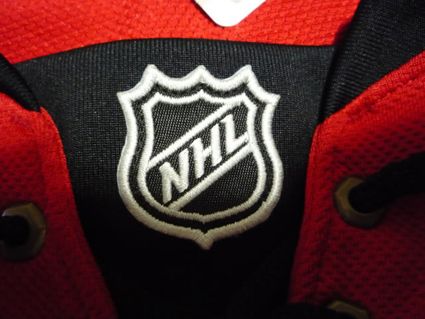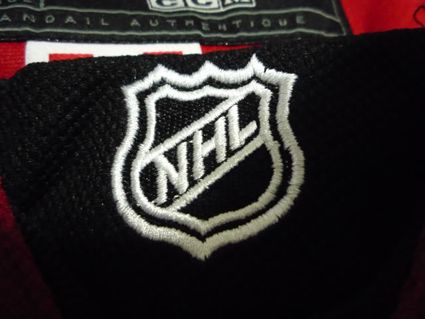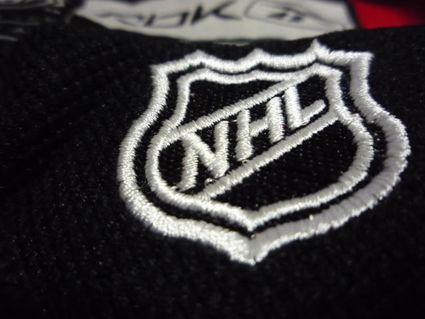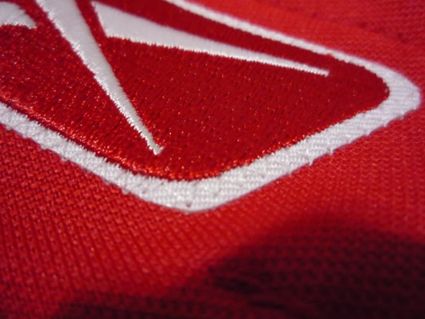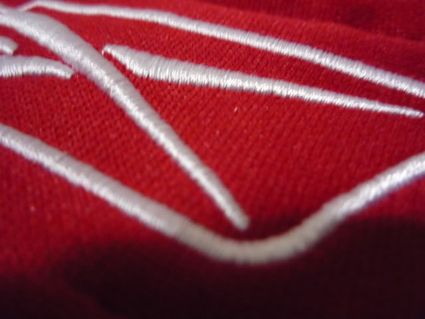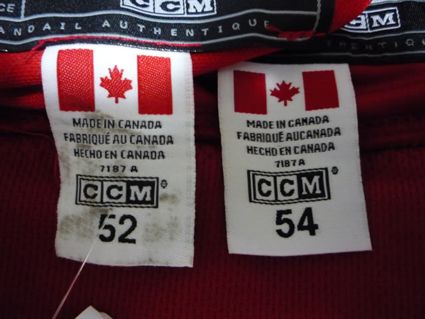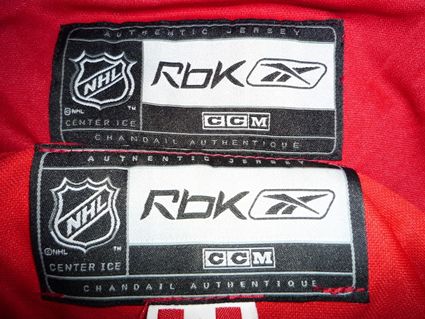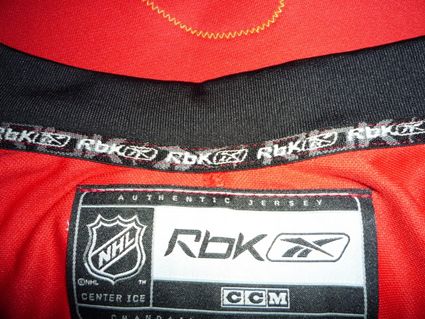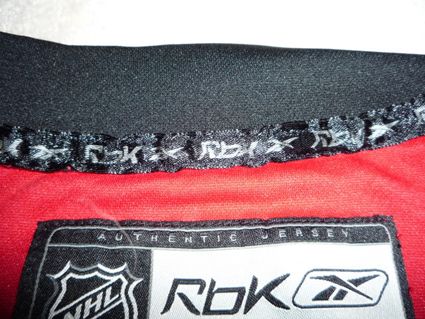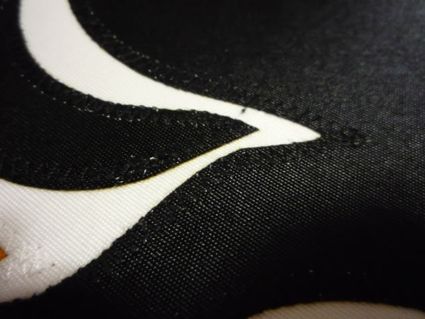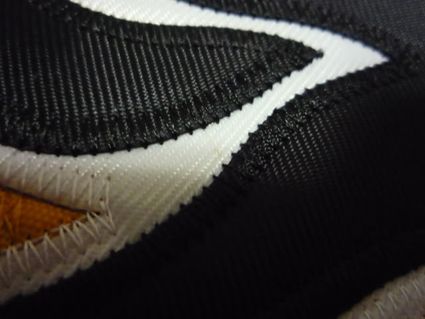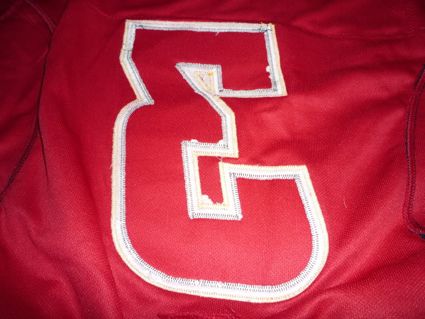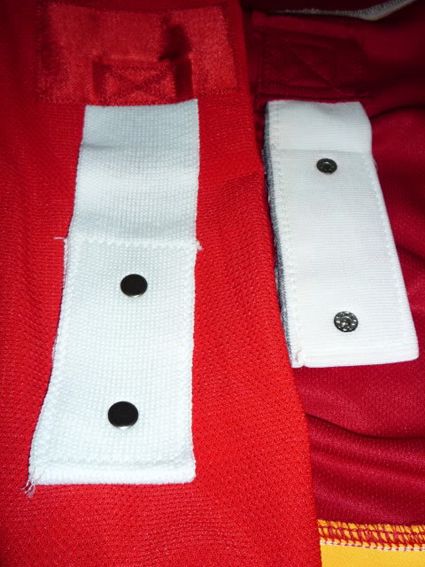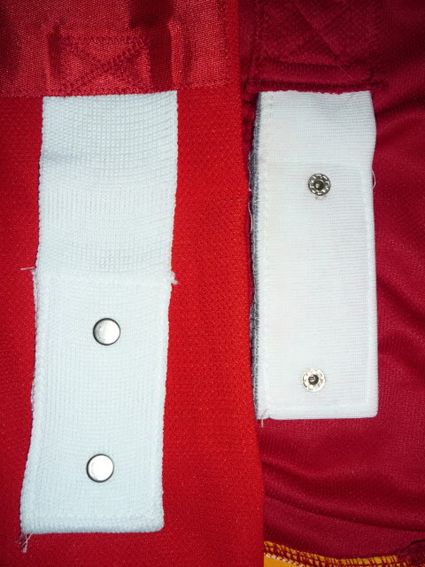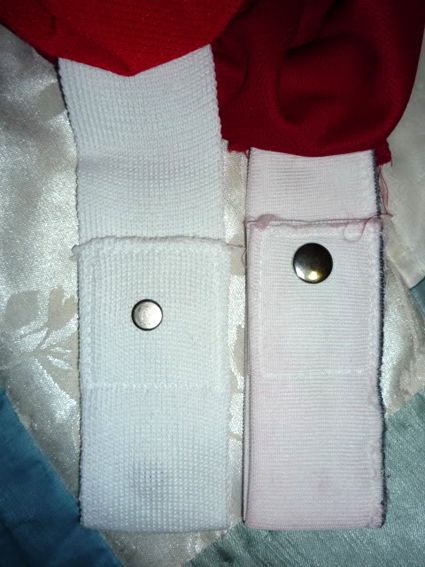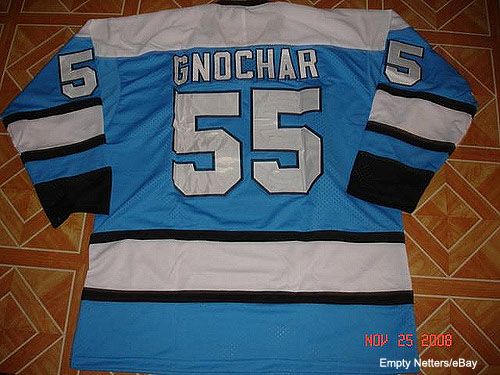It's Day 5 of Hockey Jersey Training Camp and our next "drill" is about jersey patch resources and removing the rigid plastic backing from certain patches.
Beginning with the 1921-22 Ottawa Senators, who proudly proclaimed themselves as Champions of the World, the NHL has a long history of celebratory, anniversary, patriotic, anniversary of both city, team and even ownership, olympics games, memorial, charitable organizations, All-Star games, Stanley Cup Finals, arena openings and closings, special event games, such as the annual Hockey Hall of Fame game, season opening games in foreign countries and Winter Classic games, inaugural seasons and most recently jersey retirement ceremony patches.
The use of jersey patches was limited to Stanley Cup champions wearing a celebratory patches in the 1920's and did not reappear until the 1940's with a couple of patriotic examples followed by a patch worn by the Red Wings to commemorate the City of Detroit's 250th anniversary in 1950-51 and 1951-52.
Patches were non-existant for the remainder of the 1950's and all of the 1960's but when the Boston Bruins celebrated their 50th anniversary in 1973-74, the modern patch was born. In 1975-76, five of the Original Six clubs wore a patch for at least part of the season and the memorial patch came into being in 1977. Since then there has been at least one full season patch worn every season and their use exploded in popularity in the 1980's, kickstarted by the Edmonton Oilers wearing a different patch every year for four consecutive seasons from 1979-80 to 1982-83.
Here at ThirdStringGoalie there's nothing we like more than adding a patch to one of our jerseys. Of the over 450 non-game worn jerseys in our collection, 334 of them, or 72% have at least one additional patch added and we're frankly surprised the percentage is not higher. Of the 130 jerseys that do not have a patch, 68 are national team jerseys which tend to have far fewer patches than NHL jerseys, which frequently celebrate team anniversaries, hosting all-star games and Stanley Cup Finals appearances that don't apply to national teams.
There have even been occasions where we have first obtained a patch and then needed to get a jersey to go under it!
As with jerseys, a great number of our patches have come from ebay, due to the ability to find a great many of them for reasonable prices. There was a time when a little patience could turn up most anything you wanted and for a good price. Sometimes favorite sellers come and go, even reappearing again, although sometimes with the same inventory but a different user name.
One thing to be aware of though, is several sellers on ebay are selling reproductions of patches. In some cases they are making available patches which were never sold to the public or patches which are long out of production and we're please to finally be able to have a chance to purchase these. In other cases though, the same sellers are making copies of current, authentic patches which are readily available elsewhere. Normally, the majority patches do not have a finished edge and the design is surrounded by a quarter inch wide white border to allow for the stitching to attach the patch to the jersey. The copies have a very small raised edge around the outside of the patch the authentic ones do not.
While some demand only authentic patches from when they were originally produced, in many cases those were never or are now unavailable anywhere. At this point it becomes a matter of going without in the name of authenticity or getting the best patch available in this day and age.
This is especially true of memorial patches to honor those who have passed away. The teams do not want to risk being seen profiting from those who have died, and do not make memorial patches available to the public. But there is still a demand from collectors to own those patches to either honor the deceased, who have had a profound impact on their favorite club, or for the sake of making their jersey as accurate in appearance as possible for a given season or to simply add one to their jersey to make it stand out from the crowd. In the case of memorial patches, those who have the ability to reproduce such patches often waste little time in making them available via ebay, and it's up to the individual collector to decide if they want a known reproduction and if so, to decide which version available has the highest degree of accuracy, as some are much better than others.
Aside from ebay, one of our favorites is Patch Collectibles thanks to their great service and authentic products.
Another trusted source is Murf & Pat Denny Sports Memorabilia. Murf has been in the hobby since before it was a hobby and deals in only authentic patches as well. If it's hard to find, Murf is always a good bet to be the only one with it in stock. His prices can be higher at times, so it's not a bad idea to check out his ebay listings before buying direct from his website.
If really backed into a corner, we will check out what's in stock at River City Sports. They seem to be either getting out of the patch business or cutting way, way back on inventory, as they only list a handful of patches after 2004 and their prices have been greatly slashed on their older ones. Be warned however, that we consider RCS to be a last resort, as their shipping prices are simply ludicrous. $15 shipping on a flimsy little patch is out of line and does not go over well with us in the least, especially when compared to a $2 shipping charge from Patch Collectibles.
Another source worth mentioning is Patch Collection, not to be confused with Patch Collectibles. We wish we could recommend them more, but they do sell quite a high percentage of modern remakes with the raised edge border we discussed earlier. The majority of the photos they use on their website and their ebay auctions are overexposed, making your ability to detect the remakes quite difficult, but there are some items they sell that are originals and they do carry some things we cannot find elsewhere, so we do on occasion purchase from them, especially via ebay.
If you have any recommendations for other sellers of patches, feel free to post your favorites in the comments below.
A development in the patch collecting world is the use of a hard plastic backing on patches made by National Emblem to prevent them from being sewn on a jersey. Furthermore, under the plastic is a warning sticker which reads "WARNING: Attachment of this emblem to another product by sewing, adhesives or any other means will ruin it's collectable value and is not permitted without the approval of the National Hockey League."
To be blunt, screw that.
They fail to mention how adding a patch will enhance the collectable value of the jersey to which it is applied.
Collectors have developed a number of different methods for removing the rigid, thick plastic backing, not to be confused with the thin flexible plastic coating long used to prevent fraying and the embroidery stitching from accidentally unravelling.
All three methods involve heating the patch in order to soften the adhesive and the plastic backing. The options are heating the patch with a hair dryer, boiling the patch or heating it with a hot iron, which we find to be our preferred method, as it allows for the entire backing to be removed quite cleanly and all at once.
Note: NEVER microwave a patch. With metallic threads becoming more commonly used, their presence will cause burn marks on patch within seconds, ruining your patch.
The method we will describe is our favorite, the hot iron method.
Step 1 - First, read the warning label on the back and laugh at the part where it says putting the patch on a jersey will ruin it's value.
Step 2 - Place the patch onto a paper plate on your kitchen table or counter top.
Step 3 - Turn your iron up to full power, the cotton setting, and let it heat up.
Step 4 - Fold a paper towel in half and place it over the patch.
Step 5 - Place the hot iron on top of the patch, heating it through the paper towel for at least three minutes.
Step 6 - Pick up the patch with a needle nose pliers. Run your thumb over the edge of the patch to see if the fabric backing will easily separate from the plastic. If not, place the paper towel over the patch and place the hot iron back onto it for another 3-5 minutes. Obviously, the patch will be hot, so use care.
Step 7 - Continue to heat the patch until the backing plastic and the fabric begin to separate. Once you have reached this point, grasp the part of the plastic backing which has separated from the fabric of the patch with the needle nose pliers and carefully peel the patch away from the plastic backing. It should come off quite easily once it is heated to the proper amount and the adhesive has softened enough.
Be patient! If you need to use force, it's not yet hot enough and you should apply another 3-5 minutes of heat.
One note of caution - don't just rip the patch off of the backing without taking care. It is possible for a thread from the patch to stick to the backing. You don't want any threads from the design to pull out of the patch, or it will cause parts of the patch design to disappear. If you see a thread starting to be pulled out of the patch, snip it off with a small scissors before proceeding.
Once the backing has been successfully removed, your newly flexible (but now devoid of "collectible value") patch is ready to be sewn on any jersey, which will only increase the jersey's collectible value!
Step 8 - Once all the plastic is off, be aware the back of the patch will be covered with hot, sticky adhesive. Lay the patch face down on the paper plate and let it cool off. It will still be tacky, but the danger of having hot adhesive stick to you will be over. We usually place the patch inside of a ziplock sandwich bag. We find this is a great way to ship the patch to our customizers with its intended jersey to avoid leaving unwanted adhesive on our jersey which would attract dirt over time.
We've had pretty good results using both the boiling and iron methods, but have had an incident where the horizontal threads of the patch backing have stuck to the plastic backing and pulled out of the patch, ruining it. This was likely caused by impatience resulting in not enough heat being used, so please understand these are not foolproof methods, but are widely accepted as the best way to remove the backing.

